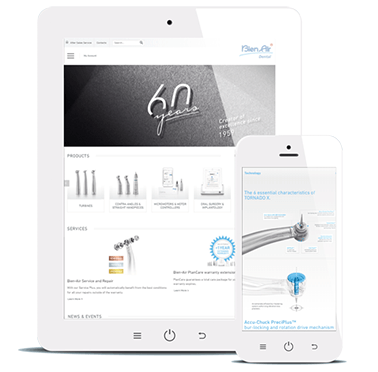This complexity can discourage many companies from even considering the potential benefits of such a system. However, despite the initial challenges, implementing PIM can save time and money in the long run. Therefore, it is beneficial to reflect on this and address the common myths surrounding this subject.
Myth 1 – Implementing a PIM system is too complicated
Product Information Management (PIM) systems can be a valuable asset for product development teams who are passionate about new technologies.
The PIM system uses API connectors to transfer data efficiently between different systems, enabling teams to collaborate effectively and share information without rewriting the same data multiple times. However, some people may find workflow control aspects challenging as they may seem complicated.
Although the PIM system may initially appear demanding, it saves time and resources in the long run. The more experience you gain, the more proficient you become in using this tool. It pays to invest time in learning and adapting work to the new possibilities offered by PIM.
This will lead to greater efficiency, increased competitiveness in the marketplace, and improved customer satisfaction by providing accurate and up-to-date product information.
It's important to note that PIM software is designed for different teams dealing with marketing, product management, sales, customer service, design, and e-commerce. The goal is to transform technical product data into compelling content that customers can understand. This makes PIM extraordinarily flexible and adaptable to the different needs of teams.
The PIM software's user interface is designed to be intuitive and friendly to all business roles, making it easy for employees to quickly acquire the skills needed to use the tool effectively.
In addition, most PIM system providers offer high-quality user training and support at every deployment stage. This means that the company can count on professional help and advice, resulting in a smooth and effective system implementation.
As a result, PIM becomes not only a tool but also a partner in achieving business success by using product information management at the highest level. When employees see how centralizing data in one place can improve their daily work, they are more open to adopting a new tool.
The myth that the PIM class system is too complicated to implement can be dispelled with proper planning, provider support, and project management. This system can bring many benefits in managing product data and improving business efficiency. Therefore, it is worth considering its use as a strategic business tool.
If you are interested in the functionality of the Pimcore platform and the benefits of its use, this article is for you.
Myth 2 - Data migration will bring business processes to a halt
Centralizing product data is the first step towards improving the efficiency of managing information about the products offered. However, it can be a challenging process depending on the stage of development of the company.
Nevertheless, it is worth acknowledging that the potential for revolutionizing product data management lies in this process. After all, the goal of a PIM system is to consolidate information in the cloud so that you can maintain its accuracy from that point on.
This is extremely important since the accuracy of product data is crucial to building customer trust and to the effectiveness of your marketing efforts. Though it is common to hear that this can cause the business to stop working, a properly planned and managed implementation of PIM will result in long-term benefits that far outweigh any short-term inconveniences that may occur.
It is worth noting that the PIM system is not just a technological tool, but also a strategy that can change the way the company communicates with customers and approaches product development.
The process of collecting and organizing product data involves:
- Identifying the main data sources,
- Collecting information about products,
- Selecting the most important product data,
- Defining standards for units and terminology for the description of product attributes,
- Creating or officially defining the structure of product categories,
- Configuring these standards in the PIM system when product data is transferred from trusted sources that were previously identified,
- Once the PIM system has been tested, it will automatically categorize new products based on relationships and hierarchies.
 Though the details of these steps may vary from company to company and PIM system to PIM system, the conclusion is the same: product data migration is the most time-consuming part of the process.
Though the details of these steps may vary from company to company and PIM system to PIM system, the conclusion is the same: product data migration is the most time-consuming part of the process.
However, it is necessary to build effective data management in the PIM system.
Before getting started with other aspects, it is necessary to migrate the initial data. Thanks to PIM, the average project duration is significantly reduced.
Teams can complete tasks that would take weeks in just a few days. New e-commerce platforms can be deployed seamlessly, and marketing and sales materials can be created much faster.
However, lacking a PIM system can lead to chaotic data management, resulting in costly and time-consuming implementation projects and product updates. The initial data migration required to implement a PIM system does not necessarily disrupt business.
With proper planning, testing, and support, major disruptions can be avoided, and a smooth migration can be ensured, allowing the company to reap the benefits of better product data management.
Myth 3 - Full implementation of a PIM system is a long process
When it comes to implementing a PIM class system, there are often concerns about the initial data migration and how long the implementation process will take. Many people assume that implementing a PIM system is a time-consuming process, but the reality is that there are different options available, and the time required for implementation can range from as little as 2 weeks to as long as 6 months. Companies have two main options when implementing a PIM system.
The first is a complete implementation, where all product data and assets are immediately migrated to PIM. The second is a step-by-step implementation, where the company can disconnect from legacy systems and move data in batches.
The final choice between these options should be based on the individual needs of the organization and the analysis of existing systems and integrations. One of the critical factors of success is the careful and comprehensive initial process of implementing the PIM system.
The time required to implement a PIM system can depend significantly on the company's level of data management and the complexity of existing business processes. However, with a solid information base, companies that have been concerned about the quality and consistency of their product data can implement PIM much more quickly.
Implementing a PIM system is also an excellent opportunity to rethink and optimize existing business processes related to product management.
This can help companies avoid rethinking old, inefficient processes, and introduce a new PIM system, resulting in long-term benefits in the form of improved efficiency and increased competitiveness. It's worth noting that implementing a PIM system is not just a matter of technology - it's also about involving teams and adapting to a new way of working.
By centralizing data, collaboration between different departments within the company can be smoother and more effective, resulting in higher-quality products and services for customers.

It's essential to carefully plan and customize the process to the organization's unique needs and capabilities to ensure a successful implementation. With the proper support and approach, the implementation of a PIM system can be significantly shortened.
If you're considering implementing a PIM system in your company, we recommended checking out our free guidebook, which includes a list of 100 questions to help you to us conduct and effective analysis before implementing a PIM class system.
Myth 4 - Using other SaaS solutions works as well as PIM
As the software industry grows, accurately identifying business needs becomes more challenging. Although different systems, such as PIM, PLM, PCM, and MDM, may seem similar, they each have their own unique applications.
- PIM, or Product Information Management System, is a key tool for product content marketing. It focuses on controlling product data, ensuring its accuracy, and supporting content creation before publication.
- CMS (Content Management Systems) is a generic tool for creating content that is not specific to product sales. They can be useful for creating websites but do not address product data management.
- PLM (Product Lifecycle Management System) focuses on product engineering and quality without dealing with the creation and publishing of product content.
- PCM (Product Content Management System) focuses on enriching product content, but does not collect and manage product data like PIM.
- MDM (Master Data Management System) covers all data in the organization. However, it is not a suitable alternative to PIM due to its overall functionality.
The PIM system is irreplaceable and offers unique features essential for collecting, managing, creating content, and exporting product data. PIM offers unique combinations of features that are essential for product data management. It remains vital for many companies, especially those with a wide range of products and need advanced capabilities to maintain the consistency and quality of product data.
To avoid the myth that using other SaaS solutions is as effective as PIM, it is vital to understand the real needs of the company in terms of product data management, thoroughly evaluate the available solutions of PIM systems and other SaaS services, and consider the scalability and flexibility of the tools in the context of the future development of the company.
If you want to know more about PIM systems and how they can benefit your organization, please contact us. Our experts will be happy to advise you and answer any questions you may have.
 Myth 5 - Less IT and security control
Myth 5 - Less IT and security control
Many companies may worry that an open-source PIM system's technical and security issues are beyond their control.
However, PIM provides robust security measures, and the provider handles all technical support, including routine software updates.
This means that the company can focus on the strategic aspects of the business while ensuring that its data is protected.
Open Source SaaS has numerous benefits in data management. It is a cloud technology that provides unlimited storage, reliably protected by the teams in charge of the infrastructure.
As a result, your organization's IT department can focus on its core mission and save on security-related costs while maintaining appropriate protection against potential threats. Ensuring the security and proper maintenance of the infrastructure is critical, especially considering that the proper use of IT resources translates into competitiveness and operational efficiency.
In the event of a system crash, data is safely stored in the PIM cloud. Moreover, it allows for monitoring user activity and access to detailed information about unauthorized changes. This gives more control over user roles and auditing of content. Therefore, open-source SaaS becomes not only a data management tool but also a strategy that helps companies focus on their primary goal - achieving success in the marketplace.
Implementing a PIM system does not have to compromise IT control and product data security. On the contrary, it can help improve security, process control, and data consistency, benefiting the business.
The key is to plan and configure the PIM system correctly in accordance with the company's security requirements and standards.
Conclusions
Choosing the appropriate PIM system, whether open source, SaaS, or some other option, is a vital strategic decision for any company. Access to accurate and consistent product information is essential in today's fast-paced market, and PIM makes it possible. Additionally, the open-source SaaS model offers flexibility and scalability, enabling businesses to customize the solution to meet their evolving needs.
Implementing a PIM-class system in the cloud can help support business processes, increase operational efficiency, and build stronger customer relationships. Investing in PIM systems is a wise decision that yields long-term benefits. A PIM system can give a company a competitive edge in the e-commerce era, where accurate product data management is critical to success. Therefore, selecting a PIM system is not only an investment in the tool, but also in the company's future.



 As mentioned above, clients from all over the world rate our comprehensive approach to project implementation and business consulting, which is why Clutch has considered uss a leading eCommerce Software Development Team in Poland. That is, however, not all.
As mentioned above, clients from all over the world rate our comprehensive approach to project implementation and business consulting, which is why Clutch has considered uss a leading eCommerce Software Development Team in Poland. That is, however, not all. In our daily work, we help to develop our clients' businesses. Their trust and effective cooperation make us grow as well. In January, 2022, the new edition of the Forbes Diamond Award report was published and we were proud to be listed among the fastest-growing Polish enterprises in this prestigious report. And as we help to develop our clients' businesses by doing our utmost best, their thrust and cooperation mean a lot. Indeed, we will only continue to grow together!
In our daily work, we help to develop our clients' businesses. Their trust and effective cooperation make us grow as well. In January, 2022, the new edition of the Forbes Diamond Award report was published and we were proud to be listed among the fastest-growing Polish enterprises in this prestigious report. And as we help to develop our clients' businesses by doing our utmost best, their thrust and cooperation mean a lot. Indeed, we will only continue to grow together!
 Though the details of these steps may vary from company to company and PIM system to PIM system, the conclusion is the same: product data migration is the most time-consuming part of the process.
Though the details of these steps may vary from company to company and PIM system to PIM system, the conclusion is the same: product data migration is the most time-consuming part of the process. 
 Myth 5 - Less IT and security control
Myth 5 - Less IT and security control







